I have a certain Context setup similar to this
const DataContext = createContext({ data: null });
const getData = (key) => {
switch(key) {
case 1:
return "Hello"
case 2:
return " World"
default:
return null
}
}
export const DataProvider = ({ id, children }) => {
const data = useMemo(() => {
return getData(id);
}, [id]);
return (
<DataContext.Provider
value={{
data,
}}
>
{children}
</DataContext.Provider>
);
};
export default DataContext
And child components that use it like this
const HelloComponent = () => {
return <DataProvider id={1}>
{
// children are components that useContext(DataContext) and expect data to be "Hello"
}
</DataProvider>
}
Now I need to do this
const HelloWorldComponent = () => {
return (
<DataProvider id={1}>
<DataProvider id={2}>
{
// children are components that need to read both Hello and World
}
</DataProvider>
</DataProvider>
);
};
Need to provide all parent context's data of one single Context definition to a set of children
I know useContext can only read the closest parent of a given ContextType, so I'm not sure of how to proceed with this.

